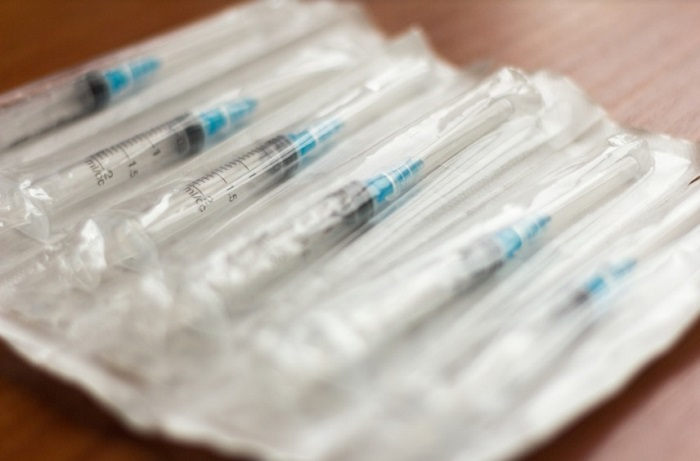Injectables are automatically associated with drugs once heard. A drug can be a medicine or other liquid substance that affects the body in a physical or psychological manner. Medicines make use of the bloodstream in order to be carried to where they need to go.
As stated by How Stuff Works, there are six (6) ways by which a drug can proceed to the bloodstream: pills and capsules; inhalants; shots; intravenous (IV); suppository and dermal patch. Some medicines do not work in the form of others because of their properties and attributes.
For example, insulin. Produced by the pancreas, it is a hormone needed by people diagnosed with diabetes because they don’t and can’t have enough. Normally and for full efficiency, it is injected, because it is too large of a molecule and sensitive to acid to come in the form of a pill or capsule.
How It Is Used
Medicinal drugs are administered through an injection. The cure or medicine appears in a liquid solution which is dispensed by pushing the needle through the skin into a vein, or tissue or organ. It is injected wherever the drug should be placed for circulation
Intradermal injection involves inserting the liquid between the layers of the skin. Intramuscular is into muscle tissues. Some procedures engage in the direct administering of the drug to the heart (intracardiac) or brain (intracerebral). The intracorneal injection also exists, by injecting directly into the eye’s cornea. A lot of instances would take the urgency of the demand for the drug is to be so extreme that it needs to arrive straight and quickly to the site where it is needed.
The Injectables
What are these? Have you ever heard of the glutathione drip? It is definitely one of them. A professor of Pharmaceutics says that injections are sterile – free from any bacteria and totally clean; it can be in the form of a solution or a suspension. Stored in an oily tube or elongated container, it is introduced to the body via an injectable needle through the vein, layer of the skin or mucous membrane.
Another example would be an injectable contraceptive. Once injected, it acts as a birth control tool. It stops the ovulation and prevents the possibility of pregnancy.
Requirements for Injectable Formulation
According to Injectable Solutions published by Dr. Basavaraj Nanjwade, these are the general requirements that must be observed while working on the formulation of the injectables:
- sterility and stability
- chemical purity
- specific gravity
- isotonicity
- free from pyrogens
- free from foreign particles
Processing Injectables
After knowing the requirements, let’s jump to the processing. Ginhong caters machines that will be of greater use for the making of these parenteral products. What are the steps in producing these injectables?
-
Maintain cleanliness
Remember, injectables are defined as sterile preparations. Meaning to say, the objective is cleanliness. Cleaning everything first is a good step, to begin with. Check all the containers, the closures, the equipment. Wash it, fumigate, sterilize.
-
Collect the materials
Everything that you will need to carry out the process, prepare it now. Packing and roaming around trying to find those missing needed materials will attract bacteria. Make sure you are ready with them, and that you yourself are clean, too.
-
Prepare the parenteral products
Parenteral products are the ones you will be using to produce your solutions, emulsions, suspensions, powders, etc. Make them available and accessible within the working area.
-
Filtration
Filtration is the process of segregating solids from the liquids by using an instrument called filter. This is the fourth step of the processing. Separate the parenteral products and other substances that you are to use – solids from liquids.
-
Pour the preparations into final containers.
The final containers you have cleansed during the first step must be ready now. Fill them with the preparations you have rustled up.
-
Seal containers
This is important! Seal carefully or air will invade the preparations inside the container. Aeration leads to the injectables’ susceptibility to bacteria and other microorganisms, making the by-product unclean; thus, not passing the general requirements of injectables.
-
Sterilization
Sterilize. Wash your own hands, the product in the container that needs to be sterilized. Set it inside a casserole or pan with water. Heat the thing and allow the water to boil in a matter of 15 minutes. Finally, remove the object using clean tongs.
-
Evaluation of parenteral solutions
Maintain quality control by evaluating the finished parenteral products through the following tests (in order):
- Sterility test
- Clarity test
- Leakage test
- Pyrogen test
- Assay
-
Labeling
After passing the tests, the products are generally labeled with the following information:
- Name
- Quantity of the preparation
- Mfg. License no. & Batch no.
- Date of manufacture
- Date of expiry
- Storage conditions
- Retail price
- Manufacturer’s address
-
Packaging
The last step is packaging. Glass and plastic syringes, rubber stoppered vials and bottles, syringe-vial combinations, ampoules, plastic bags, and bottles are the options for packaging of the injectable preparations.
Source: Injectable Solutions
Over time, products are packaged in disposable syringes, polyvinylchloride, polyester, and polyolefin plastic containers.
Conclusion
Injectables are very much sensitive; this includes their processing and formulation. It must be handled properly and by knowledgeable people. Because it is injected and dispensed through the bloodstream, the most important thing to keep in mind is its sterile property. The product must be clean, bacteria-free and carefully sealed.

